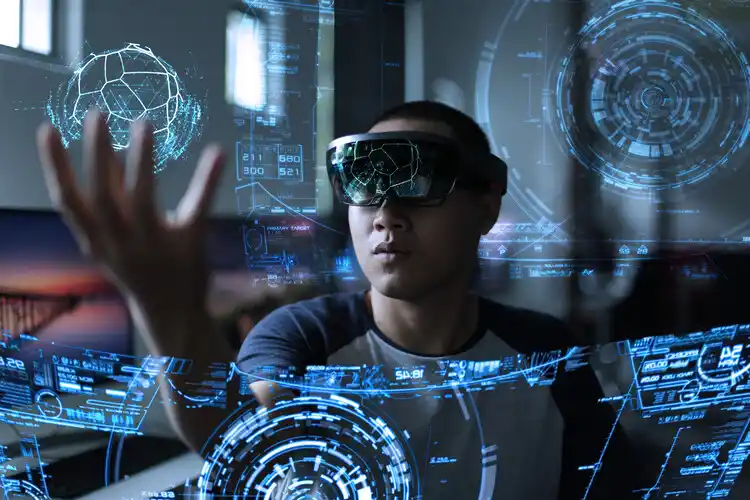Virtual Reality (VR) is becoming more popular for employee training and development. It allows employees to train without shutting down machinery or having to travel for training sessions.
This is a great alternative to traditional training programs. But, it is important to remember that VR should be a supplemental training program.
Enhanced Training
VR provides an immersive learning experience that allows employees to practice skills that could pose a risk in real-life settings. They can learn how to handle machinery or other workplace hazards without putting themselves in danger, which makes it a safe and realistic way to build new skills.
The realism of VR training helps to reinforce new skills and build confidence in employees. This can lead to increased retention and improved performance in the workplace. It also reduces the time and cost of training by eliminating the need for expensive, inconvenient travel. A recent study found that employees trained in VR got up to speed four times faster than those trained using traditional methods and 275% more confident applying their new knowledge.
Many companies are beginning to incorporate VR into their hard skill and soft skill training programs. For example, Volkswagen uses virtual reality hire to train employees to assemble cars and trucks, so they can get on the job quickly. The company also uses VR to train employees on warehouse operations and how to load and unload trailers.
Companies need to prepare for the switch to VR training by developing a plan and identifying the key leaders who will support this initiative. Then they need to pilot the program, measure test scores and employee satisfaction, and make a decision about when to implement it on a larger scale.
Realistic Scenarios
VR can simulate high-stakes situations that would be difficult or dangerous to replicate in real life. For example, an employee could be trained to work on a turbine or operate machinery without having to be near the equipment in the real world. This saves on time, money and resources and provides a more realistic training experience for employees.
Virtual reality is also the ideal training tool for subjects that may be uncomfortable or difficult to imagine, such as unconscious bias and sexual harassment. Mursion, for example, created a virtual tool in partnership with the College of William and Mary to help managers reduce their unconscious biases when hiring new workers, while Vantage Point’s training helps employees identify and respond to situations that can be hard to detect.
For customer service employees, VR can create engrossing and immersive scenarios that allow them to practice dealing with difficult customers. For instance, Bank of America worked with virtual reality company Strivr to develop a simulation that allows its employees to conduct conversations with customers that require both critical thinking and soft skills. This helped employees better understand the emotional and mental aspects of a conversation and how to handle difficult customer situations.
Other industries that benefit from VR include hospitality and retail. McDonald’s used virtual reality software and real-world scenarios from Tantrum Labs to implement hospitality training. The system allowed employees to undergo various scenarios with multiple-choice options to learn how to deal with customer complaints and conflicts.
Saves Time
Virtual reality training gives employees hands-on experience, which is critical for building knowledge retention and confidence. Whether it’s training in how to spot hazards in a warehouse, food safety rules for workers in the hospitality industry or PPE safety for healthcare professionals, VR is a cost-effective way to train employees in the situations they face daily.
This approach is especially useful when the situation is too risky or expensive to replicate in real life, such as training employees on how to use heavy machinery, how to drive a truck or even how to perform a surgery. VR allows learners to practice their skills without the risk of injury or damage, and they can learn from their mistakes without fear of repercussions.
VR training can also be much faster than traditional methods. This is important when a business needs to get its employees up to speed quickly and reduce downtime or disruptions to their work. For example, Walmart slashed the time it took to onboard a new employee from eight hours to 15 minutes with VR.
The quicker a new hire is able to onboard and be productive, the more valuable they are to a business. Virtual reality offers an effective and efficient way to accomplish this, which is why more companies are turning to it to train their employees.
Increases Confidence
With VR, employees can practice skills in realistic situations without worrying about safety or the potential consequences of their mistakes. The immersive nature of the technology also helps train them to identify and understand different points of view, a critical skill for addressing challenges in customer conversations.
Whether training new managers in inclusive leadership or teaching ground technicians how to inspect a plane, the experiential learning that VR offers can make it easier for trainees to apply these skills in real-world settings. The experience builds confidence and self-efficacy, which can have a significant impact on performance.
The virtual nature of VR training also makes it easier for employees to learn and retain information compared with traditional eLearning. Studies have found that immersive experiences can improve engagement and increase knowledge retention rates by up to 75-90%.
As the cost of VR hardware and software continues to drop, organizations can take advantage of this powerful learning solution without breaking the bank. The business case for VR is becoming more compelling as companies see measurable performance improvements, cost savings, and organization-wide productivity gains.
